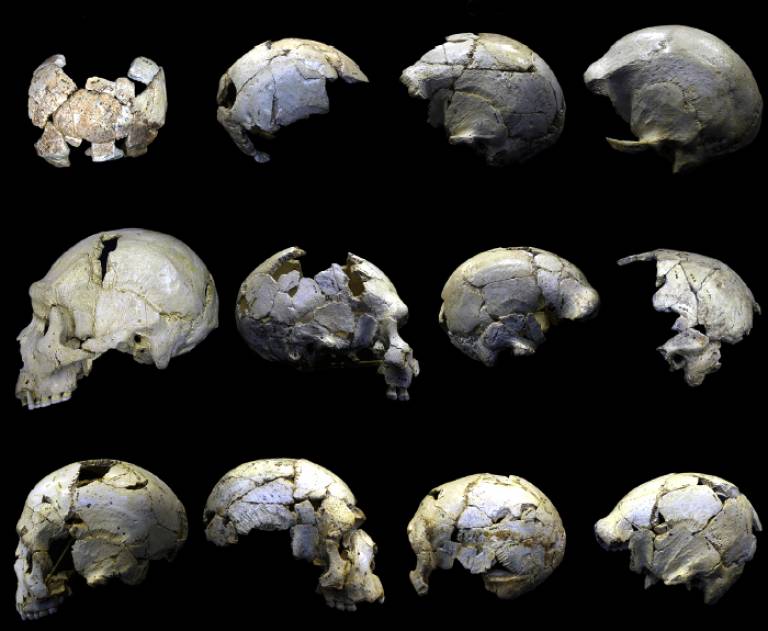Homo neanderthalensis met a violent end at Sima de los Huesos
17 June 2016
The Sima de los Huesos (SH) site has provided the largest collection of hominin crania in the fossil record, offering an unprecedented opportunity to perform a complete forensic taphonomic study on a population from the Middle Pleistocene.
 The fractures found in seventeen crania from SH display a postmortem fracturation pattern, which occurred in the dry bone stage and is compatible with collective burial assemblages. Nevertheless, in addition to the postmortem fractures, eight crania also display some typical perimortem traumas. By using CT images we analyzed these fractures in detail. Interpersonal violence as a cause for the perimortem fractures can be confirmed for one of the skulls, Cranium 17 and also probable for Cranium 5 and Cranium 11. For the rest of the crania, although other causes cannot be absolutely ruled out, the violence-related traumas are the most plausible scenario for the perimortem fractures. If this hypothesis is confirmed, the team may be able to interpret that interpersonal violence was a recurrent behaviour in this population from the Middle Pleistocene.
The fractures found in seventeen crania from SH display a postmortem fracturation pattern, which occurred in the dry bone stage and is compatible with collective burial assemblages. Nevertheless, in addition to the postmortem fractures, eight crania also display some typical perimortem traumas. By using CT images we analyzed these fractures in detail. Interpersonal violence as a cause for the perimortem fractures can be confirmed for one of the skulls, Cranium 17 and also probable for Cranium 5 and Cranium 11. For the rest of the crania, although other causes cannot be absolutely ruled out, the violence-related traumas are the most plausible scenario for the perimortem fractures. If this hypothesis is confirmed, the team may be able to interpret that interpersonal violence was a recurrent behaviour in this population from the Middle Pleistocene.The Sima de los Huesos Crania: Analysis of the cranial breakage patterns
Nohemi Sala, Ana Pantoja-Perez, Juan Luis Arsuaga, Adrian Pablos, Ignacio Martínez
DOI: 10.1016/j.jas.2016.06.001
 Close
Close

